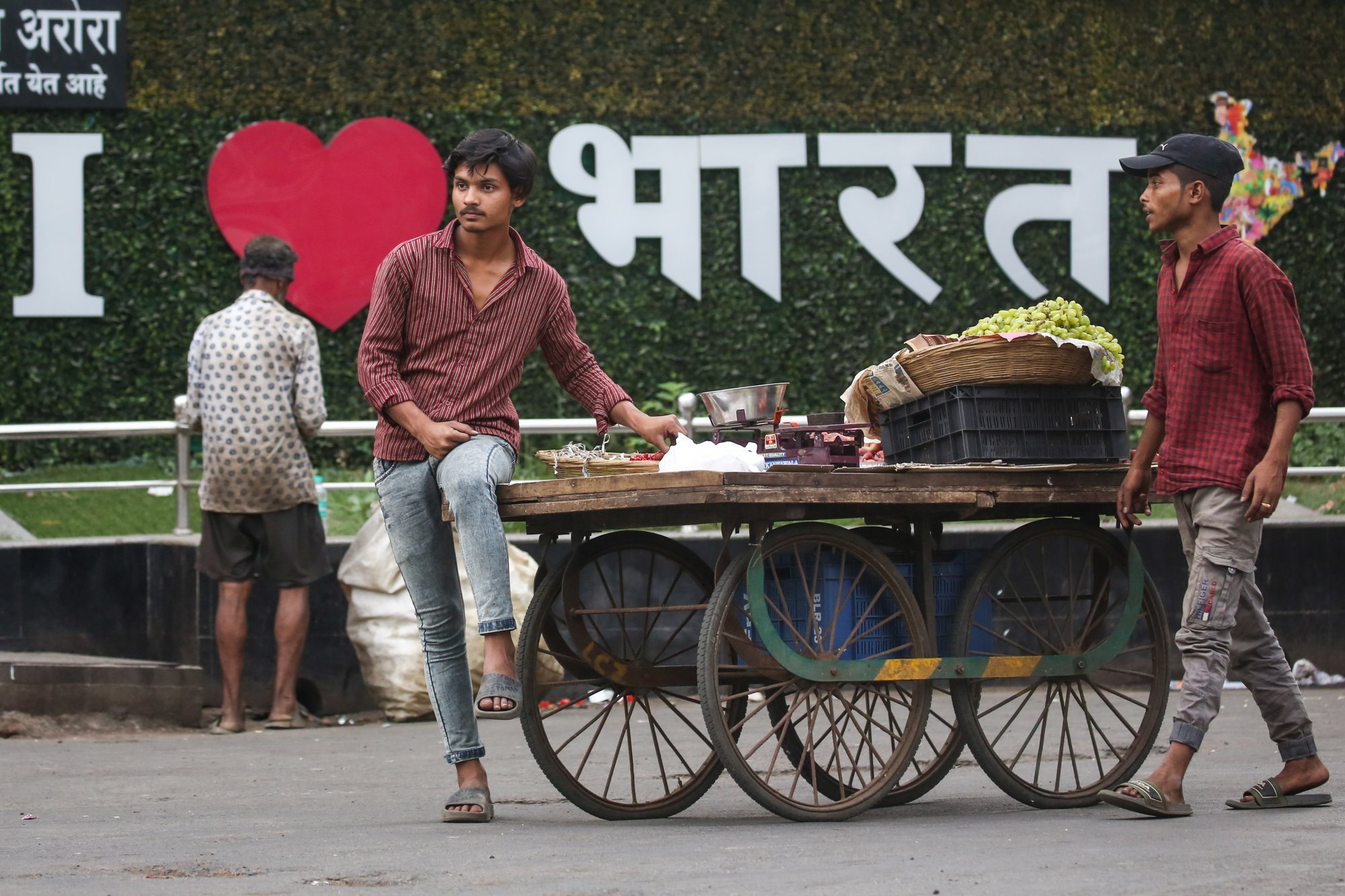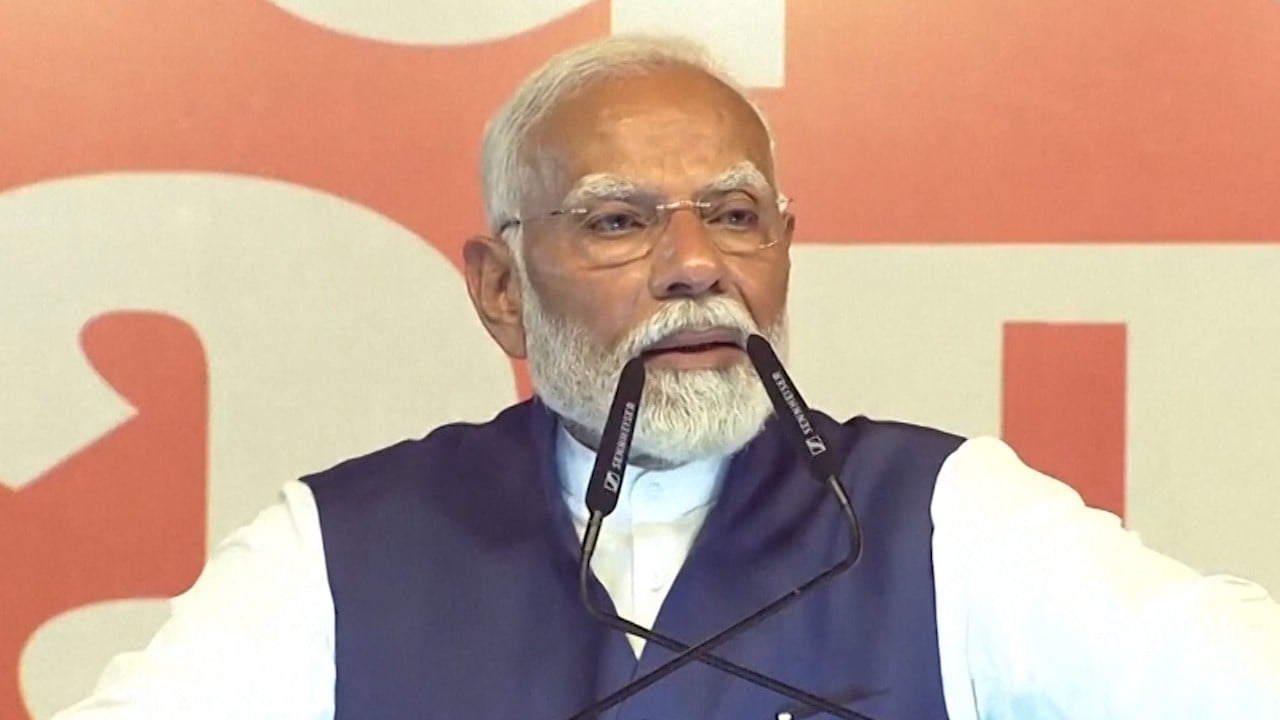
Can India’s Modi win over allies to press ahead with economic reforms after election?
- While PM Narendra Modi may not have won a parliamentary majority, he could still succeed in implementing reforms if history is a guide
Modi’s Bharatiya Janata Party (BJP), which emerged the winner but fell well short of its target of an overwhelming parliamentary majority, is expected to be sworn into office this weekend with the support of allies under the National Democratic Alliance (NDA).
The index rose again on Wednesday after two key allies reaffirmed support for the BJP-led coalition government, and continued rising on Thursday, hovering around 75,074.51 in mid-afternoon Mumbai time.
“We expect policy continuity, especially with regard to budgetary emphasis on infrastructure spending and boosting domestic manufacturing to support robust economic growth,” said Christian de Guzman, a senior vice-president at Moody’s Ratings.
“However, the NDA’s relatively slim margin of victory as well as the BJP’s loss of its outright majority in parliament may delay more far-reaching economic and fiscal reforms that could impede progress on fiscal consolidation,” he said.

The NDA secured 294 seats in the 543-member lower house of parliament, above the 272 majority needed to form the government.
In its two previous stints in government, the BJP alone secured a majority of seats, giving it room to push through policies without having to depend on the support of regional parties in the NDA.
India’s economy rose to 8.2 per cent in the 2023-24 financial year from 7 per cent in the previous year.
Analysts note India’s other key reforms undertaken in the last 10 years such as the introduction of a centralised sales tax, which has helped reduce its current account deficit, and strengthening the balance sheets of local banks have been crucial in boosting investor sentiment.
Nonetheless, India has to remove other obstacles before it can achieve its economic goals, according to the analysts.

The BJP has said it wants India to become a fully developed nation by 2047, its 100th year of independence from British colonial rule. It aims to increase the size of the world’s fifth-largest economy by about eight times to US$29 trillion by then and per capita income by about sevenfold to nearly US$18,000.
“Although we project India to grow faster than all other economies in the G20 through fiscal 2025-26, near-term economic momentum masks structural weaknesses that pose risks to long-term potential growth,” Guzman said.
High levels of youth unemployment, which has been a recurring source of voters’ dissatisfaction in the election, and weak agricultural growth are key challenges for the Indian economy, he added.
While India’s youthful population gives it a competitive edge over other ageing countries such as Japan and China, it has to create millions of jobs across industries to realise its economic potential, analysts say.
India would need to add 115 million jobs by 2030 to provide sufficient employment, said Garcia Herrero, chief economist for Asia-Pacific at investment bank Natixis in a webinar on Tuesday.
“The election results have been humbling for the BJP. If they draw the right lessons then the growth story should continue and even improve. The critical ingredient is lack of jobs, especially in manufacturing,” said Pushan Dutt, Professor of Economics and Political Science at INSEAD.
“The right lesson is to continue the reforms to accelerate jobs, improve rural productivity, increase labour force participation and make India an attractive destination for investment,” he added.
Apart from jobs, the country’s long-term growth would depend on whether it can reform its agricultural sector to weed out middlemen and facilitate land purchases, economists say.
If India could do so, its economy might rival China’s by 2050, Herrero said.
Modi’s proposal to introduce agricultural reforms triggered farmers’ protests in 2021, forcing his government to put them aside. Farmers have long demanded guaranteed prices for their crops, a proposal which the government says would impose an economic burden.
Support for crucial reforms
Before the election, a BJP spokesman said Modi would implement labour reforms, which were passed by parliament in 2020. But following the election, Modi could face obstacles in fulfilling his target under a coalition government, according to a report by the Australia and New Zealand Banking Group Limited released on Wednesday .
“The odds that the government will pursue difficult and contentious reforms such as the simplification of labour laws, land acquisition and agricultural markets are likely to diminish,” the report said.
The bank has maintained its projection for India’s economy to grow by 6.8 per cent for the 2025 financial year.

Analysts say India would need to lower import tariffs further to attract global manufacturers. But such a move is expected to be resisted by domestic companies, which have warned that they would invest less in the country.
India has introduced productivity-linked incentives for the manufacturing sector producing goods ranging from mobile phones and electric vehicles. It recently lowered import tariffs on electric vehicles to attract major companies like Tesla.
If Modi can gain strong support among his allies within a coalition government, he could proceed with critical reforms, analysts say. They cite key reforms carried out by past Indian governments when the ruling party of the day did not have a parliamentary majority.
Among them, then Prime Minister Narasimha Rao introduced sweeping reforms in 1991 to open India’s economy after decades of centralised planning while Finance Minister P Chidambaram revamped income and corporate taxes during the 1997 budget.
“I don’t think the [election] results reflect voter dissatisfaction over BJP’s economic policies, rather it appears to be more on local and non-economic issues. More so, BJP underperformed in three predominantly rural and agriculture-oriented states,” said David Chao, a global market strategist for Asia-Pacific at Invesco.
“This leads me to think that the planned reforms that have already been put in place aren’t going to change. I would expect that the focus remains on getting these reforms implemented and executed over the next five years rather than any policy pivot.”


